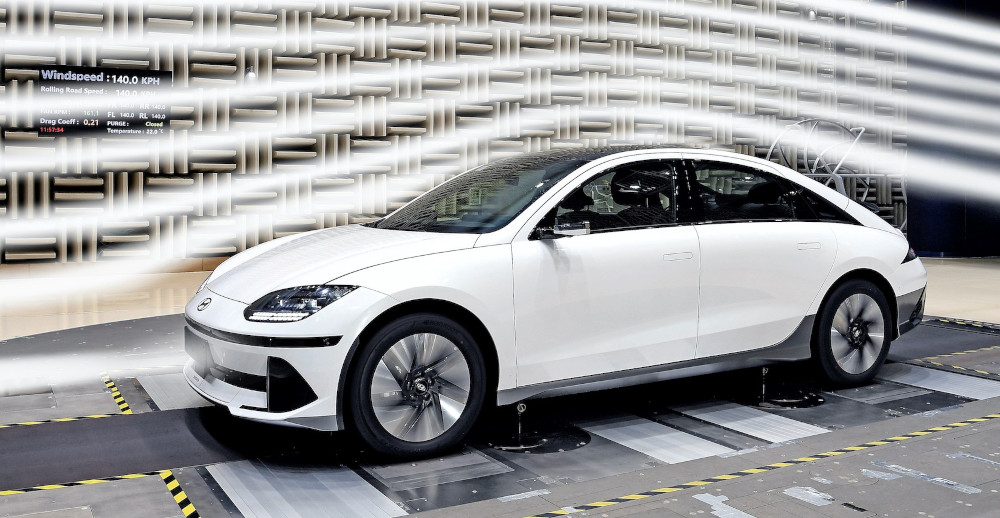Hyundai’s Ioniq 6 design takes inspiration from cars, aircraft and nature

(Courtesy of Hyundai)
Hyundai Motor Company says its Ioniq 6 EV has a drag coefficient of 0.21 and an all-electric range of 614 km (WLTP-rated) on a single charge, thanks to lessons learned from some of the most streamlined shapes in automotive and aircraft history, as well as in nature.
From the automotive realm, it cites the 1947 Stout Scarab, Phantom Corsair and Saab Ursaab ‘Streamliner’ cars as major influences.
Another key influence was the Supermarine Spitfire, a famous World War 2 British fighter plane. Hyundai designers applied a Spitfire-inspired winglet to the side of the Ioniq 6’s rear spoiler to absorb the airflow from the roof and reduce drag by minimising vortices at the spoiler’s tip. This effectively reduces the eddy currents generated from the side of the vehicle, helping to reduce drag.
They also took notes from nature, especially the shape that a peregrine falcon takes when it dives after prey at 390 kph.
The car itself has a streamlined shape like the wing of an airplane, so at high speeds, lift is generated aerodynamically by the difference in pressure between the top and bottom of the vehicle. The downforce generated by its rear spoiler reduces lift, even during fast driving.
For the rear spoiler and several other aerodynamic solutions, its designers used a shape transformation technology known as the ‘morphing technique’, along with computational fluid dynamics analysis. This enabled an active air flap (AAF), wheel air curtains, wheel gap reducers, separation traps and wheel deflectors to be applied to problem areas.
An AAF on the front bumper reduces cooling resistance, which accounts for more than 20% of total air resistance. It opens when the cooling system needs to run, and closes when it is not needed.
The wheel air curtains, which are designed to naturally connect with the AAF, feature a vented hole in the side of the vehicle rather than the front. When the AAF is closed, the airflow is concentrated at the front of the vehicle, and the pressure generated is distributed to the wheel air curtain. The air that has escaped laterally through the curtains flows to the outside of the tyre, reducing air resistance.
The Ioniq 6 has a relatively short front overhang, as the wheelbase has been lengthened to maximise its interior space, which created an aerodynamic challenge. To address it, the team devised a wheel gap reducer to minimise the space between the front bumper and tyres. As this solution effectively extends the ends of the front bumper, the airflow from the front does not separate from the wheel but flows seamlessly over it.
While it is not easy to reduce the gap in the upper part of the wheel owing to tyre and body interference caused by the vertical suspension movement while driving, the wheel gap reducer at the front part of the wheel well helps reduce air resistance.
The team also applied a separation trap between the Ioniq 6’s rear combination lamp and the lower part of the rear bumper. The trap is designed to guide airflow more smoothly by applying a line that coincides laterally with the tip of the rear spoiler to drop the flow of air to the side of the vehicle in a consistent position. This, along with the air diffused at the tip of the rear spoiler, helps reduce drag.
ONLINE PARTNERS






















